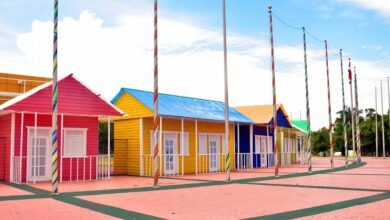7 Trees Every Filipino Should Have in Their Yard
Growing a tree or two in your backyard may require patience and effort for them to thrive. And because tree-planting is no easy feat, you might want to consider planting trees that are enduring against all sorts of weather conditions. In that case, check these seven trees many Filipinos usually plant, and should have, in their yards.
Mango
When it comes to tropical fruits, Philippine mangoes are some of the favorites of locals and foreigners. These sweet greenish-yellow fruits are well-loved by Filipinos, which is why they keep a mango tree or two in their yards. You might see one shading the front porch of some of the houses in your next visit to the Philippines.
Besides growing delicious fruits, mango trees have thick green, glossy canopies that provide ample shade and a cool breeze for hot sunny seasons. Mango trees are also hardy and ideal for blocking strong winds and rain that may otherwise damage your roofs and property.
Mango trees are easy to grow from seed and can grow in almost all soil types, as long as they are drained well. It may take several years to grow, but with patience and extra love, you’ll produce a happy, strong, and healthy mango tree in your yard.
Streblus Asper
Known as Adulig in Ilocano or Kalios in Tagalog, Streblus asper is a hardy tree that can withstand both dry and typhoon seasons in the Philippines. They have coarser leaves, making them suited for high-humidity places such as Metro Manila. Condominium developments in Quezon City may place Streblus asper trees in their open areas to add a tropical and rural touch to their contemporary set-up.
Residents of condominiums may still introduce such an imposing tree into their cozy space–in the form of bonsai. Streblus asper is suitable for bonsai training due to their durability and resilience. Having a miniature Streblus asper tree adds a zen-like aesthetic and ambiance to your designated condo.
Narra
Narra is known as the Philippines’ national tree. It is notable for being durable and suitable for furniture making and construction. Besides being a primary source of furniture and fixtures, Narra trees are perfect decorative trees for any backyard. They grow tall and have thick, beautiful canopies that provide ample shade and a relaxing breeze.
Narra also has bright yellow flowers that bloom from February to March. These dainty buds give a vibrant and playful contrast to the tree’s dark green leaves. When the flowers fall, they look like Japan and South Korea’s cherry blossoms every spring season. You might experience a romantic spring-like view in your garden with your beautiful and robust Narra trees.
Neem
Tall trees with thick barks and canopies aren’t the only perfect greenery for yards and gardens. Neem trees have narrower trunks and sword-like leaves that look beautiful when swayed by the wind. They can grow up to 30 meters and provide ample shade for your outdoor area.
Neem trees are herbal and mostly found in many backyards of Filipino homes. Their herbal benefits include treating diseases such as leprosy, eye disorders, skin ulcers, and stomach problems. However, neem trees are most notable for their scent that repels mosquitoes. Their bark is also said to be medicinal and may help treat malaria and mosquito bites. Plant neem trees in your front and back yard to keep the pesky mosquitoes away. You keep your household safe from dengue and malaria fevers while also adorning your garden with such beautiful and hardy evergreens.
Ilang-ilang
Ilang-ilang, or Ylang-ylang, is a tropical tree valued for its fragrance which is extracted to make perfumes and essential oils. In fact, the world-famous Chanel No. 5 perfume has notes made of ilang-ilang extracts.
They are usually only grown at around three meters for perfume extraction as this height makes it easier for harvesters to plush the sweet-smelling flowers. However, they can grow a staggering 40 meters tall, making them suitable for shade and blocking strong winds and rain.
Besides being fragrant, the droopy yellow flowers of ilang-ilang trees are used for religious ceremonies in the Philippines; they are usually made into garlands or leis, along with Sampaguita flowers, that are hung on religious icons and images.
Siar
Known as Copperpod or Yellow Flame in English, siar trees are deciduous trees native to tropical Southeast Asia. They usually grow up to 25 meters (although some trees are reported to grow at 50 meters) and are used as an ornamental tree in many Filipino yards, particularly in Malolos, Bulacan. The most famous siar tree is known as The Freedom Tree near the front of the Malolos Cathedral. The tree was named so because the late President Emilio Aguinaldo planted it during the historic Malolos Convention of 1899.
Like Narra trees, siar trees also have bright yellow flowers that are beautiful against their thick green canopies. You might want to plant a few siar trees close to your Narra trees to experience a spring- and fall-like view when their golden blooms fall.
Agoho
Have you seen a row of trees that seem like pine trees but aren’t actually pine? If yes, you might have seen a multitude of agoho trees. Also known as whistling pine trees in the west, you can usually find them along the North Luzon Expressway.
Agoho trees are slender evergreens that can grow up to 35 meters tall. They have needle-like leaves and fruits that look similar to pinecones, which is why they are often mistaken for pine trees. Agoho trees are relatively tolerant to droughts and can grow in almost any climate type. You might want to add some agoho trees in your back or front yard to create the feel of a hillside cottage with a chilly and relaxing atmosphere. Plus, agoho trees are low-maintenance compared to pine trees, making them a more cost-efficient option.
As a whole, planting trees in your backyard creates a shady and beautiful retreat for you and your family to enjoy the outdoors and warm sunny days. To add tropical trees that will give your home a Filipino touch, consider planting some of these seven trees in your front or back yards.




